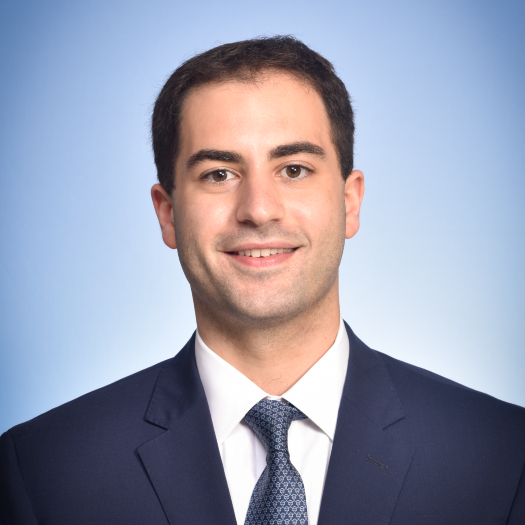Condition
Pediatric Otitis Media (Middle Ear Infection)
Key points about middle ear infections
- Ear infections can affect both children and adults.
- Pain and fever can be the most common symptoms.
- Without treatment, permanent hearing loss may happen.
- Take antibiotics as prescribed and finish all of the prescription. This can help prevent antibiotic resistant infections or incomplete treatment with the infection returning.
Frequently Asked Questions
What is a middle ear infection?
Pediatric otitis media, or a middle ear infection, is inflammation located in the middle ear. Otitis media can occur as a result of a cold, sore throat or respiratory infection.
- More than 80% of children have at least one episode of otitis media by the time they are 3 years of age.
- Otitis media can also affect adults, although it is primarily a condition that occurs in children.
Who is at risk for getting ear infections?
While any child may develop an ear infection, the following factors may increase your child's risk of developing ear infections:
- Being around someone who smokes
- Family history of ear infections
- A poor immune system
- Spending time in a daycare setting
- Absence of breastfeeding
- Having a cold
- Being bottle-fed while laying on his or her back
What causes pediatric ear infections?
Middle ear infections are usually a result of a malfunction of the eustachian tube, a canal that links the middle ear with the throat area. The eustachian tube helps to equalize the pressure between the outer ear and the middle ear. When this tube is not working properly, it prevents normal drainage of fluid from the middle ear, causing a build up of fluid behind the eardrum. When this fluid cannot drain, it allows for the growth of bacteria and viruses in the ear that can lead to acute otitis media. The following indicate some reasons why your child’s eustachian tube may not work properly:
- A cold or allergy which can lead to swelling and congestion of the lining of the nose, throat and eustachian tube (this swelling prevents the normal flow of fluids)
- A malformation of the eustachian tube
How is a pediatric ear infection diagnosed?
In addition to a complete medical history and physical examination, your child's physician will inspect the outer ear(s) and eardrum(s) using an otoscope. The otoscope is a lighted instrument that allows the physician to see inside the ear. A pneumatic otoscope blows a puff of air into the ear to test eardrum movement.
Tympanometry is a test that can be performed in most physicians' offices to help determine how the middle ear is functioning. It does not tell if the child is hearing or not, but helps to detect any changes in pressure in the middle ear. This is a difficult test to perform in younger children because the child needs to remain still and not cry, talk or move.
A hearing test may be performed for children who have frequent ear infections.
What are the effects of pediatric ear infections?
In addition to the symptoms of ear infections listed above, untreated otitis media can result in any/all of the following:
- Infection in other parts of the head
- Permanent hearing loss
- Problems with speech and language development
What are the different types of pediatric ear infections?
Different types of otitis media include the following:
- Acute otitis media (AOM)
The middle ear infection occurs abruptly causing swelling and redness. Fluid and mucus become trapped inside the ear, causing your child to have a fever, ear pain and hearing loss. - Otitis media with effusion (OME)
Fluid (effusion) and mucus continue to accumulate in the middle ear after an initial infection subsides. Your child may experience a feeling of fullness in the ear and hearing loss. - Chronic otitis media with effusion (COME)
Fluid remains in the middle ear for a prolonged period or returns again and again, even though there is no infection. This may result in difficulty fighting new infection and hearing loss.
What are the symptoms of pediatric ear infections?
The following are the most common symptoms of ear infections in children. However, your child may experience symptoms differently. His or her symptoms may include:
- Unusual irritability
- Difficulty sleeping or staying asleep
- Tugging or pulling at one or both ears
- Fever
- Fluid draining from ear(s)
- Loss of balance
- Hearing difficulties
- Ear pain
The symptoms of otitis media may resemble other conditions or medical problems. Always consult your child's physician for a diagnosis.
How can pediatric ear infections be treated?
Specific treatment for otitis media will be determined by your child's physician based on the following:
- Your child's age, overall health and medical history
- Extent of the condition
- Your child's tolerance for specific medications, procedures or therapies
- Expectations for the course of the condition
Treatment may include:
- Antibiotic medication by mouth or ear drops
- Medication (for pain)
If fluid remains in the ear(s) for longer than three months, your child's physician may suggest that small tubes be placed in the ear(s). This surgical procedure, called myringotomy, involves making a small opening in the eardrum to drain the fluid and relieve the pressure from the middle ear. A small tube is placed in the opening of the eardrum to ventilate the middle ear and to prevent fluid from accumulating. The child's hearing is restored after the fluid is drained. The tubes usually fall out on their own after six to 12 months.
Your child's surgeon may also recommend the removal of the adenoids (lymph tissue located in the space above the soft roof of the mouth, also called the nasopharynx) if they are infected. Removal of the adenoids has shown to help some children with otitis media.
Treatment will depend on the type of otitis media your child is suffering from. Consult your child's physician regarding treatment options.
Providers Who Treat Otitis Media (Middle Ear Infection)

Nancy M. Bauman, MD
- Director, Aerodigestive Clinic
- Director Vascular Anomaly Clinic
- Otolaryngologist
Nancy M. Bauman, MD
Locations
Departments

Alexandra Genevieve Espinel, MD
- Director, Pediatric Otolaryngology Fellowship
- Otolaryngologist
Alexandra Genevieve Espinel, MD
Locations
Departments
Pamela Anne Mudd, MD
Locations
Departments

Maria T. Pena, MD
- Director, Quality Improvement and Safety
- Co-Director, Complex Sinusitis Program
- Otolaryngologist
Maria T. Pena, MD
Locations
Departments

Diego A. Preciado, MD, PhD
- Division Chief, Ear, Nose, and Throat (Otolaryngology)
- Co-Director of the Cochlear Implant Program
- Otolaryngologist
Diego A. Preciado, MD, PhD
Locations
Departments
Brian Kip Reilly, MD
Locations
Departments

Rahul K. Shah, MD, MBA
- Senior Vice President for the Children’s National Hospital-Based Specialties Center
- Otolaryngologist
Rahul K. Shah, MD, MBA
Locations
Departments
George H. Zalzal, MD
Locations
Departments
Habib Zalzal, MD
Locations
Departments
Jul 22, 2024
Helping Maddie to Live Life to the FullestMaddie is a lively, creative teen who loves to act. Research at Children's National Hospital helps to ensure that her rare disease doesn"t upstage her big theater plans or her love of life.
Jun 27, 2024
Convenient Care for CharlotteWhen Charlotte was a toddler, a respiratory illness led to a diagnosis of a rare and dangerous immune deficiency called ICF syndrome. A bone marrow transplant at age 5 at Children’s National helped save her life.
May 20, 2024
Omid Conquers Fear with MusicOmid never liked going to the dentist. Dr. Aleger changed that with a little trust, and his favorite tunes.
Departments that Treat Otitis Media (Middle Ear Infection)

Ear, Nose and Throat (Otolaryngology)
Our pediatric otolaryngology experts diagnose and treat a wide range of pediatric ear, nose and throat disorders.








